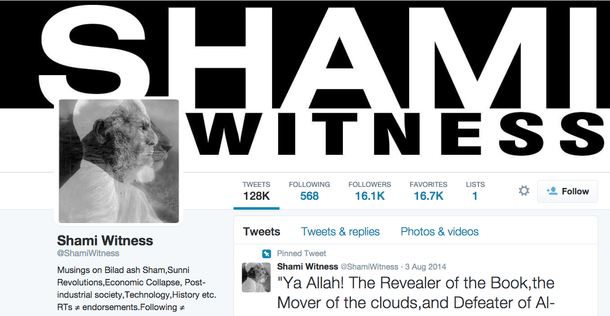Politics
Radicalising The Small Towns
Praveen Patil
Sep 22, 2015, 12:30 AM | Updated Feb 11, 2016, 09:10 AM IST
Save & read from anywhere!
Bookmark stories for easy access on any device or the Swarajya app.


Radical Islamism is now no longer an urban phenomenon in India. Recent events indicate that young Muslims in small-towns and villages are as vulnerable to the violent ideology.
Ever since Mehdi Masroor Biswas’s arrest from Bengaluru late last year for creating and operating the ISIS twitter handle, there has been a perception that some misguided tech-savvy Muslim youth have been falsely enamored by international Islamic terrorism philosophy. This perception propagated by a section of the intelligentsia wants us to believe that these ‘tech-terrorists’ are essentially nothing but an Islamic extension of the rebellious ‘hacker generation’.
Furthermore, in the Urdu press (as also in sections of mainstream media) an impression has been created that such a tendency is only found in the concrete jungles of big Indian cities. In essence, this argument concludes that Muslim youngsters belonging to small towns and villages are untouched by such extremist philosophies owing to their tightly-knit family units.
In the first week of September, the Union Home Ministry presented a nation-wide intelligence survey report to DGPs and chief secretaries of 12 states wherein some startling revelations were made. Primary among the findings of this intelligence survey of internet traffic across India was the behavior of the small town Muslim youth. Of the top 6 Indian cities that generated internet traffic in search of ISIS, five were small towns (barring the exception of Mumbai). It is indeed revealing that the Muslim youth of Chinchwad (Maharashtra) or Unnao (Uttar Pradesh) are as vulnerable to ISIS philosophy as their supposedly more tech savvy counterparts in Bengaluru or Delhi.

Source :
—Srinagar, Mumbai among top 5 cities surfing net to track ISIS-related activity, Times of India, September 1, 2015
This dangerous trend of a new generation of Muslims in small towns subscribing to radical Islamist philosophy is neither questioned by “secular” political leadership nor is it rectified. In fact, a whole new crop of Muslim leadership is emerging out of the woods to encourage these behavioral tendencies by subtly building upon a narrative of victimhood and injustice.
In the most populous state of Uttar Pradesh, for instance, the All India Majlis-e-Ittehadul Muslimeen (AIMIM), has built a network of 7.5 lakh workers in 44 districts within a short span of one year. UP is home to nearly 4 crore Muslims and AIMIM leader Asaduddin Owaisi has built a strong network across the state which he expects would give him unprecedented traction later this year in the Panchayat elections. Much before that, the MIM is contesting in the Muslim dominated Seemanchal region in the Bihar assembly elections next month because the party found tremendous pressure from Muslim youth to enter the fray even without much preparation. AIMIM has already made inroads in parts of Maharashtra and northern Karnataka by tapping the increasingly radicalized Muslim youth as its core support base.
A similar template is already playing out on a much larger scale in Kerala. The biggest chunk of 60,000 crore rupees of annual remittances that Kerala receives from its Gulf-based NRI’s is of Muslim immigrants. This so called “Saudi money” is fueling radicalization of the Muslim youth in Kerala in a big way. The IUML (Indian Union Muslim League) as the primary Islamist party of Kerala with 20 MLAs and 5 ministers has played an instrumental role in creating a radical Islamist ecosystem. The Congress, which depends on the support of IUML to rule Kerala has been silently encouraging IUML’s activities in the name of secularism without any censure from media watchdogs.
The web of global Jihadi networks and the increasing radicalization of a whole generation of young Muslims is at once a complex organism while also endowed with clarity of purpose. This new generation of Islamist fundamentalism may not be visible on the surface in larger Indian cities which dominate the national discourse, but it is seeping through in small town India where it is also finding political expression through the likes of AIMIM, IUML and AIUDF (All India United Democratic Front of Badruddin Ajmal).
While previously, Islamist radicalisation was a more urban phenomenon whence rural India had remained relatively peaceful, the trend seems to have reversed.
We are already witnessing the first part of the result of this small-town-rural fundamentalism in various parts of India below the radar of media discourse. For instance, in UP and Bihar, the last 2-3 years have witnessed hundreds of small communal incidents mostly involving skirmishes with youngsters in semi-urban and rural areas.
Similarly, in the small town societal life of Kerala and coastal Karnataka, the single biggest social problem is the much maligned “Love-Jihad” phenomenon which is largely believed to be fueled by “Saudi money”. This problem is so acute in these geographies that it has led to many communal clashes not only between Hindus and Muslims but also between Muslims and Christians over the past 3-4 years.
Possibly one of the biggest internal security challenges that the Indian government would face over the next decade would be from small town Islamist fundamentalism. How our security agencies handle these internal vulnerabilities will probably be the second most important factor in deciding India’s destiny outside the economic sphere.
Analyst of Indian electoral politics and associated economics with a right-of-centre perspective.





